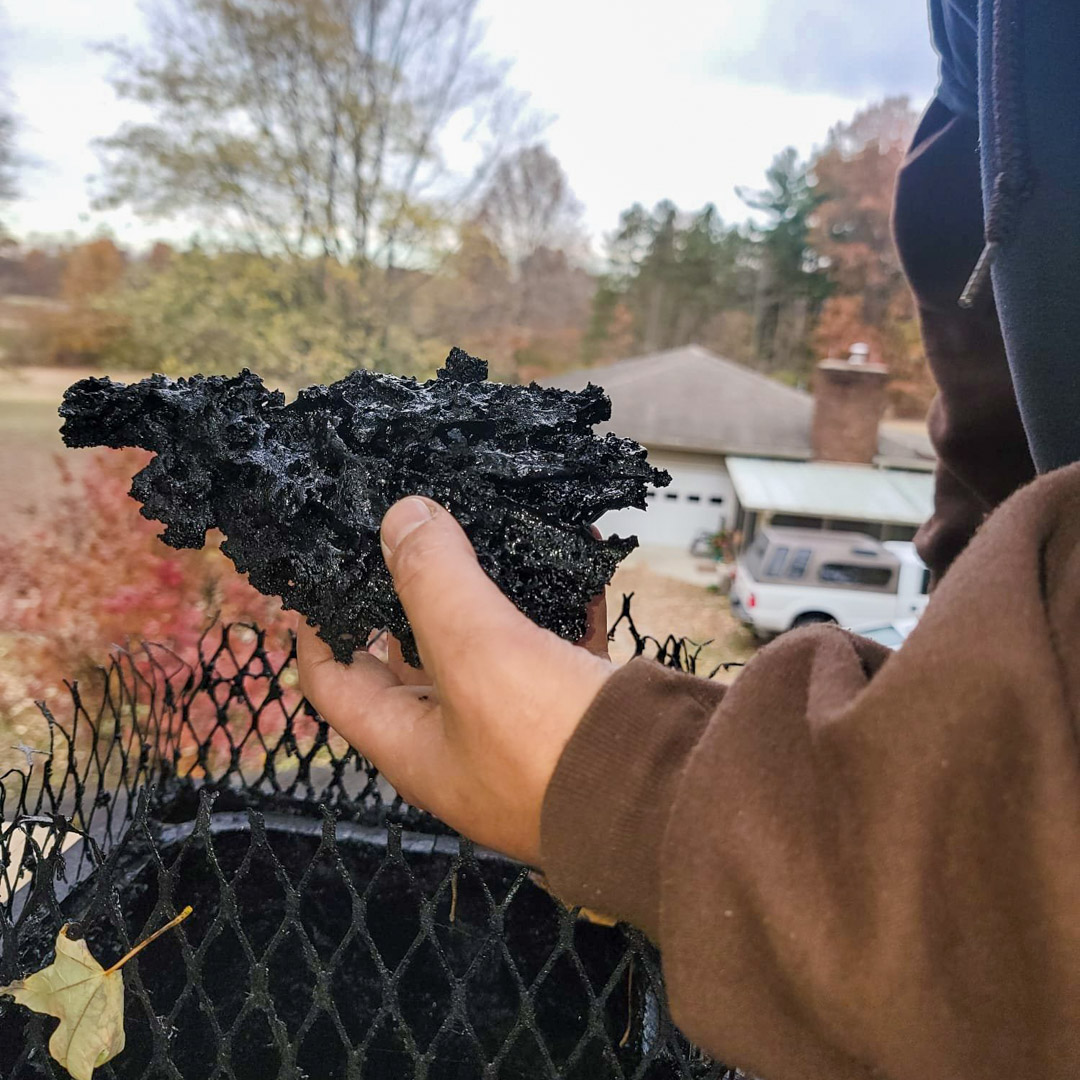What You Need to Know About the Creosote in Your Chimney
If you operate a wood-burning fireplace, then you’ve got creosote in your chimney flue. The fact that creosote exists in the flue isn’t a major concern. When it exists in large amounts, it’s a big concern.
The Chimney Guys of Pataskala, OH, would like to explain a little about what creosote is, how it builds up in a chimney, its specific dangers, and what can be done about it.
 How creosote is formed
How creosote is formed
Creosote is an acidic substance that forms when smoke, water, vapor and gases condense inside a chimney flue. Condensation is greater when the air inside the flue is a lot cooler than the smoke going into it.
Seen as a flaky, sticky or solid substance, creosote is highly flammable. In fact, it’s the #1 cause of reported chimney fires in Ohio each year.
The 3 stages of creosote
The Chimney Safety Institute of America (CSIA) recognizes three stages, or levels, of creosote:
Stage 1: The early stage when creosote is mostly flaky and can be removed with a proper brush.
Stage 2: If left alone, creosote turns sticky and presents a tar-like deposit that you can’t get rid of by brushing alone.
Stage 3: Long-standing creosote will become hard, resembling a shiny, varnished surface. In this stage, it’s difficult to remove for professionals and almost impossible to remove safely by homeowners.
Chimney fires
Not all chimney fires are violent, catastrophic events that bring four or five emergency services vehicles to your home. Some fires are quite brief, starting and going out on their own. But all chimney fires can damage your chimney flue and other areas of your interior chimney.
Watch for these signs of a chimney fire:
- Large amounts of dense smoke coming from either end of the chimney
- A rumbling sound, like from a faraway train
- Odd clicking and tapping noises
If you encounter any of these signs, call 911 and get people and pets out of the house. Do not use the fireplace until the chimney has been inspected.
Acidic damage from creosote
Because creosote in all its forms is highly acidic, it can damage the chimney liner, chimney cap, fireplace damper, bricks and other components within a chimney and fireplace system.
Reducing the buildup in your chimney
You can’t completely eliminate creosote from your chimney flue (unless you don’t use the fireplace), but you can reduce the amount of smoke you create. Here are some tips.
- Make sure the damper is fully open to provide a sufficient draft
- Burn dry, seasoned wood – never burn damp logs
- Favor hardwoods over softwoods
- Don’t pack the firebox with logs
- Have draft-obstructing debris removed from the flue
 Chimney sweeping to remove creosote
Chimney sweeping to remove creosote
Professional chimney sweep technicians use brushes, scrubbers, whips, rods, solvents and commercial vacuums to remove all stages of creosote from a chimney flue. This service should be performed at least once a year for active chimneys.
Most chimney service companies will also include a basic Level 1 chimney inspection at the time of cleaning. Inspections will alert you to early signs of damage and malfunction throughout the system so you can have problems fixed before they become serious.
Ohio chimney sweep services
The Chimney Guys provides complete chimney sweeping, inspections and all types of repair work for chimneys in Pataskala, OH, and surrounding regions. Learn more by giving us a call or reaching out with our handy contact form.



